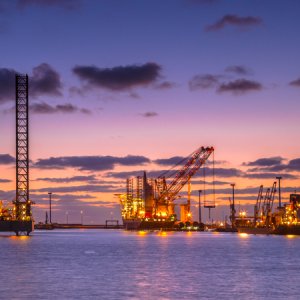CNH Prepares for Successful Bidding Rounds

STORY INLINE POST
Q: What is CNH’s strategy to effectively supervise the exploration campaigns of operators following Round One?
A: CNH, like other institutions, will have to develop surface studies with the assistance of experts responsible for acquiring geophysical, electromagnetic, and seismic information. Since it will be in charge of examining and regulating exploration and exploitation plans, CNH will need to rely on these experts. Therefore, the first priority will be to establish the applicable rules, including determining all the wells that will be drilled, the overview of the technical studies that will be developed, as well as the seismic acquisitions that will happen, among other matters. That is why we are planning to increase CNH’s personnel to 250 people, although even this number might not be enough. Because of our human capital limitations, CNH has so far had to work with external experts that provide personalized assistance. As we design our strategy, CNH is aware that there will be an inevitable brain drain. We clearly see that many experts working for the public sector will move into the private sector in the upcoming months. Although we do not expect that this migration will be as massive as some people think, there is very little that we can do to stop it.
Q: What are the main changes in the relationship between PEMEX and CNH?
A: At the beginning, the relationship will be ambivalent and complex. The processes needed for Round Zero and Round One were difficult because directing PEMEX, an institution that has dominated the energy sector for 70 years, to delimit its working and operating areas was a challenge. It was difficult for any institution to try to explain PEMEX what it could or could not do. Moreover, evaluating the financial, technological, operational, and business conditions for the delimitation of these areas was a very long and demanding process. However, this process was smoothed over when everyone understood their role and their attributions. We are now having weekly meetings with PEMEX to ensure proper cooperation and the success of the National Data Repository. The cooperation between the leaders of PEMEX, SENER, CNH, and the other institutions, has been very close, productive, and successful. Everyone assumed their role, took their specific responsibilities, and contributed to the transition.
Q: How were the blocks for the shallow water exploration phase of Round One defined, and what are your expectations for the incorporation of reserves in the next three years?
A: We expect an incorporation that will exceed the expectations, namely the resource estimation by PEMEX. The bidding areas have been identified based on the opportunities that PEMEX had defined in the past. What CNH did was to look at the maps, analyze the information, and determine the technicalities of geological structures. When these opportunities were identified, CNH worked to make sure that all of the bidding blocks contained at least one or two promising geological structures. Afterwards, the institution worked to develop a series of studies to understand the nature and characteristics of the particular hydrocarbons in a determined region, making sure that the outcome matched the data that PEMEX has stored in its data base. Ultimately, CNH determined the most interesting areas with greatest potential and geologic possibilities, and defined the adequate size for each block considering the geological risk. There are a number of geological extensions with a superficial salt covering, where the resources located underneath are unknown. PEMEX has never involved itself with estimations in these areas and at least we hope to incorporate these estimations. New operators will have to analyze these areas and determine if they want to exploit them. We consider that this type of extraction activities will yield great results, and these could be even better depending on the geologic characteristics at depths unexplored by PEMEX.
Q: What is your outlook for Round One in terms of deepwater and unconventional resources?
A: PEMEX’s experience in Perdido has been excellent thus far, but the company has not done as well in the salt basins. The area extending from Perdido to the south presents great opportunities. Yet, there needs to be a balance between what the market is communicating and what the industry is truly interested in. The oil and gas industry has pressed Mexico to present blocks that include unconventional resources and it is probable that the Mexican government will make a broad offering. We are likely to see a number of blocks with unconventional resources being included in Round One, although the specific number is up to SENER.






















